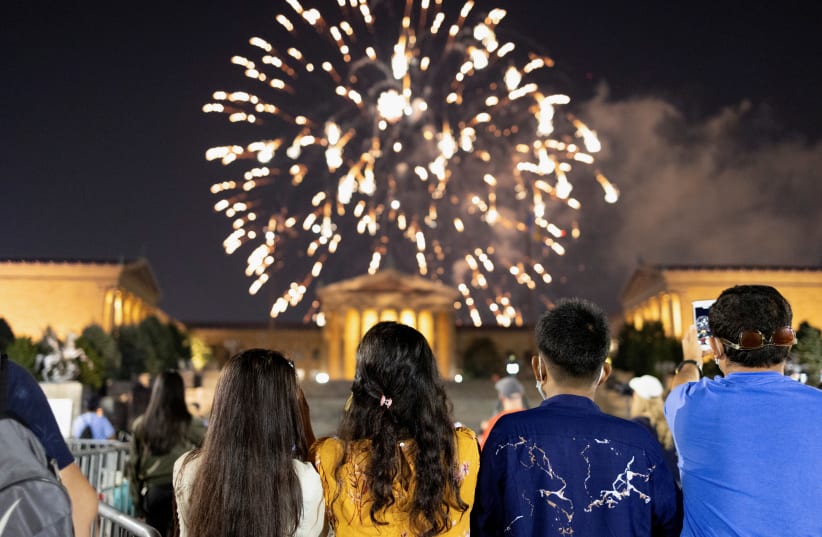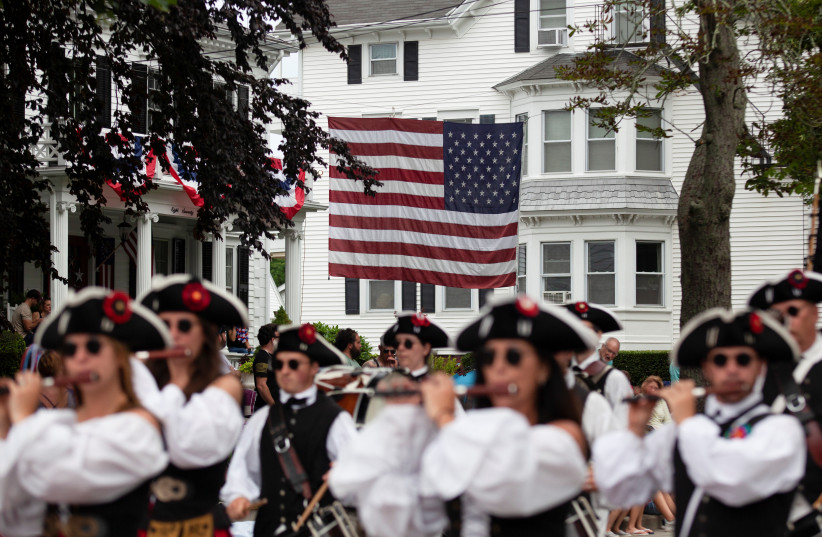Traveling the world as I do, I found myself on several occasions out of the United States on the day of July 4th, the date on which the US celebrates its independence. On one occasion I was in Vladivostok, Russia, a distance of slightly over 5,000 miles from the US state of Alaska. Actually, I might as well have been on the Moon in celebrating until I met a group of American sailors and we reminisced about what we would be doing if we were home on Independence Day.
We said we’d watch firework displays, attend family reunions, concerts, barbecues, beach picnics, parades and baseball games.
So, fellow travelers, if you’re in the US and the weather is good, July 4th is a wonderful day to observe and join the holiday party. Of course, it helps to know the background of the eventful day and visit some of the historical sites.
On Independence Day, Americans commemorate the Declaration of Independence of the United States, which was ratified by the Second Continental Congress on July 4, 1776. That Congress declared that the 13 American colonies were no longer subject (or subordinate) to King George III of England and were now united free, and independent states.
The idea at the heart of the declaration stands the second sentence, one of the best-known sentences in the English language: “We hold these truths to be self-evident, that all men are created equal, that they are endowed by their Creator with certain unalienable Rights: that among these are Life, Liberty and the pursuit of Happiness.”
Today some question if they really mean all people? Despite the divisiveness in the US today and the testing of some of its institutions, it can be argued that 246 years after that document was drafted mainly by the then 33-year-old Thomas Jefferson, today’s America still declares on July 4 that the above sentence is a statement of principles through which we would like to tell the world, this is who we are.
Incidentally, Jefferson’s original draft is preserved at the Library of Congress in Washington. The best-known version of the declaration is a signed copy that is displayed at the National Archives, also in the nation’s capital and which is popularly regarded as the official document.
If you visit Philadelphia, where many important events during America’s War of Independence (1775-1781) took place, you will see many of that conflict’s historical sites. No other city except Boston contains so many buildings of sentimental interest to Americans than Philadelphia where on July 4, 1776, 56 of America’s founding fathers adopted the Declaration of Independence in Independence Hall, which in 1789 also sheltered the convention that adopted the United States Constitution. Earlier, in 1775, George Washington was chosen commander in chief of the Continental Army.
In Philadelphia, in Independence Mall, you can visit Independence Hall at 520 Chestnut Street. As mentioned, it is the birthplace of the American government. This modern, early 18th-century Georgian building is a must to get a picture of the Declaration signing ceremony. Apparently, Independence Hall is accessible for ticketed timed tours only.
SAUNTER OVER to the Museum of the American Revolution at 101 South 3rd Street. This is an impressive multi-media rich museum where visitors can participate virtually in the war of independence.
By the way, a four-minute walk from the Museum of the American Revolution is the modern, well-known Israeli restaurant, Zahav (Gold) at 237 Saint James Place, known for its gastronomy. The chef is Michael Solomonov, winner of the James Beard Foundation Award.
Of course, one stops to gaze at the Liberty Bell, the iconic symbol of American Independence. The story goes that the Liberty Bell was made in 1751 to commemorate the 50th anniversary of Pennsylvania’s constitution. Mounted in Independence Hall, it tolled on the first public reading of the Declaration of Independence. The crack developed in the 19th century and the bell was retired in 1946. A glass-walled building protects this icon of Philadelphia history from the elements. The Liberty Bell rings 13 times every Independence Day to honor the 13 original states.
Nearby, at 239 Arch Street, sands a landmark in Philadelphia, the Betsy Ross House. It is widely believed that Betsy Ross, who assisted the Revolutionary War effort by repairing uniforms and sewing tents, made the first American flag (Stars and Stripes). However, there is no historical evidence that she contributed to Old Glory’s creation.
The Weitzman National Museum of American Jewish History, at 101 S. Independence Mall East, is open Friday to Monday 10 a.m. to 5 p.m. The collection started with only 40 objects in its first year and has since grown to include more than 20,000 artifacts, some dating back more than 300 years. The museum sponsors many programs dealing with Revolutionary times. A recent program was titles “Sefarad: Jews in Early America.”
What followed the Declaration of Independence was the continuation of a bitter war that began in 1775. American Jews are proud of the role they played in the Revolution, even though the approximate 1,500 to 2,000 Jews out of 2.5 million in the colonies were only a tiny percentage of the population. Most Jews favored the patriots. We know some of the names, but there were many more. Haym Salomon, who began the war as a wealthy merchant and whose unstinting financial sacrifices helped to keep the Revolution going, was one. He died penniless. Rev. Gershom Mendes Seixas delivered emotional sermons for the patriotic cause, and left New York City rather than remain under British rule.
Significantly, it is said, participation in the war marked the first time since their exile from Jerusalem that Jews could take their place alongside their Christian neighbors as equals in a fight for freedom. Jews were present at Bunker Hill, Valley Forge and other battle sites throughout the colonies.
In the final analysis, there have been and will be on July 4th this year many eloquent speeches. One worth citing was by John Quincy Adams, the sixth US president, who declared: “From the day of the Declaration, the people of North America were no longer the fragment of a distant empire.... They were a nation, asserting as of right, and maintaining by war, its own existence. A nation was born in a day.”
Ben G. Frank is the author of the just-published, Klara’s Brother & The Woman He Loved, A Travel Guide to Jewish Europe 4th edition, and The Scattered Tribe: Traveling the Diaspora from Cuba to India to Tahiti & Beyond. Follow him on Twitter @bengfrank.

